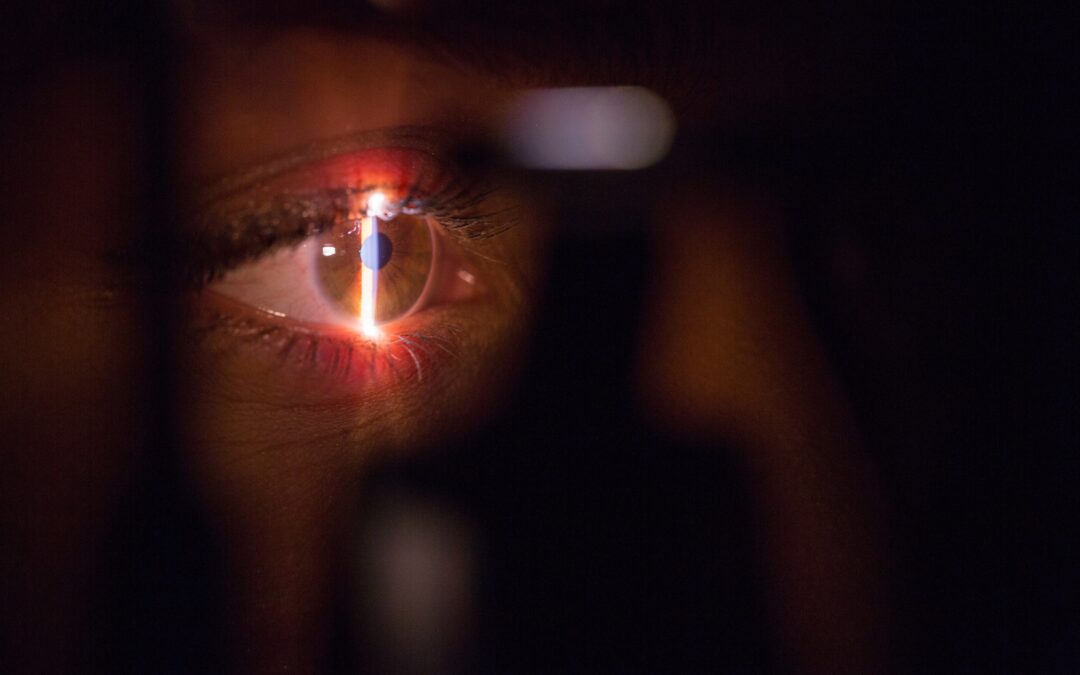What is a foreign object in the eye?
A foreign object in the eye can be anything from an eyelash or dust to a piece of metal, stone, wood, or glass. Foreign objects can land on the cornea—the clear protective covering of the eye—and stay there. The object may remain in one place or move around the eye as the eye moves.
What are the signs and symptoms of a foreign object in the eye?
The first sign of a foreign body is usually pain or the feeling that something is in the eye. The sensation may move around the eye as the eye moves, or it may remain in one place.
Other symptoms include:
- Watering of the eye
- Burning or scratching sensation
- Blurred vision
- Light sensitivity
- Pressure
- Redness or bleeding
When to seek treatment
Items such as visible eyelashes and clothing fibers will usually work their way out of the eye on their own. You can assist this process by flushing your eye with lukewarm water. Any other foreign object should be evaluated by a medical professional. If the injury occurs at work, tell your supervisor immediately.
Some places to go for treatment include:
- Primary care offices
- Urgent care offices
- Optometrist or ophthalmologist
- Emergency departments
Severe symptoms of a foreign object in the eye involving penetration of objects into the eye, bleeding, or complete vision loss should be evaluated by an ophthalmologist or by going straight to the emergency department.
Removing a foreign object in the eye—What to expect
In some cases, you’ll need to visit your primary care, urgent care, or medical professional to remove the foreign object in your eye. Here’s what to expect
History
Most medical offices can evaluate a superficial foreign object in the eye. To determine the best treatment, your medical professional will ask you a lot of questions, such as how the foreign body got into the eye, how long it has been there, and where the injury occurred. You will also be asked about allergies and if you are currently taking any medications.
Evaluation
Your medical professional will first examine your eye and locate the source of the problem. Some items may be easily visible, while others will require examining with magnification or the use of UV light. Your medical professional will also examine your eye surface to see if there has been any damage to it. A device called a slit lamp might be used, if available to scan the surface of the eye.
Treatment
In order to examine and treat your eye, anesthetic drops will be used. This makes the examination and treatment painless. A fluorescent strip containing a yellow dye will help make any surface damage visible with UV light. Your eye will be examined thoroughly, including underneath the eyelids.
Once the object is located, your eye will be rinsed with sterile saline to try and flush out the particle. If this does not work, a cotton-tipped applicator or other small ophthalmic instruments may be used to brush the object away gently.
After the removal of the object, your eye will be examined again to ensure that no particles remain. An antibiotic ointment or solution is applied to help prevent infection.
Most clinics will ask you to return within the next 24 to 48 hours for a follow-up. If your symptoms change or worsen before then, give the office a call so that they can advise you on what to do.
At-home care after treatment
Usually, after treatment, you will be able to resume most of your regular activities. However, it is best to avoid being around machinery or debris to avoid getting another object in your eye.
While you recover, here are some important things to remember:
- Do not rub or press on your eye
- Avoid operating machinery or climbing ladders
- Follow up with your doctor as directed to make sure that the eye is healing well
- Apply any prescribed eye drops as directed.
- Avoid driving while wearing an eye patch
- Take medication such as ibuprofen or acetaminophen for pain
Complications of foreign objects in the eye
Usually, foreign bodies in the eye will heal very well after treatment. However, it is possible to have complications, especially if there was any severe damage to the eye or a delay in treatment. Some complications include:
- Abrasion
- Vision loss
- Scarring
- Infection
If you experience any of these complications, contact a healthcare professional right away.
How to prevent getting foreign objects in the eye
The best way to avoid getting anything into the eyes is to wear eye protection such as goggles or safety glasses. Wear eye protection while:
- While gardening, working on a car or doing DIY projects
- Playing sports
- Using drills or grinders or being near someone who is
- Working in windy areas with sand or dust flying around
Where can I get more information?
To learn more about foreign bodies in the eye, talk to your healthcare provider. They can answer any questions that you might have and tell you what to do if you experience another foreign body in your eye. You can also browse the following websites to learn more.
Healthline: Foreign Object in the Eye
Merck Manual: Corneal Abrasions and Corneal Foreign Bodies

